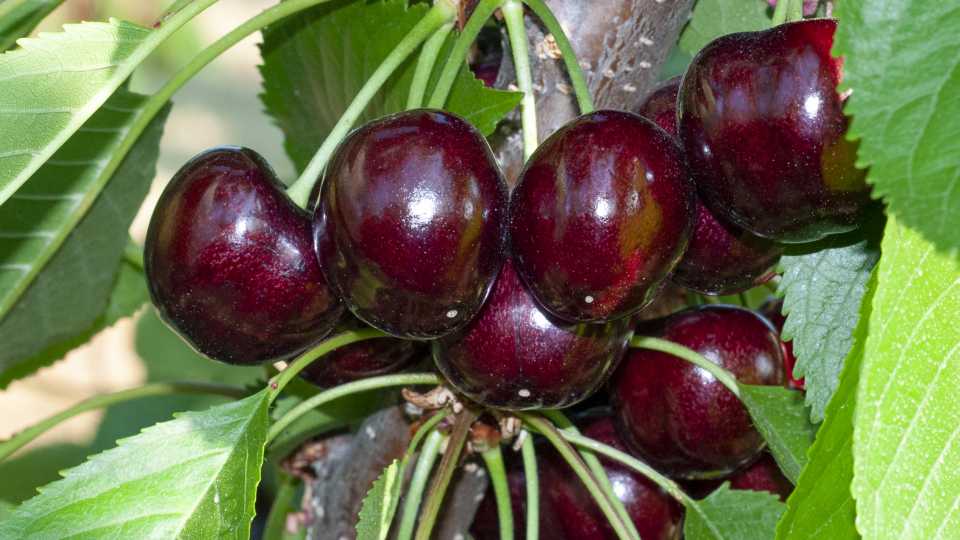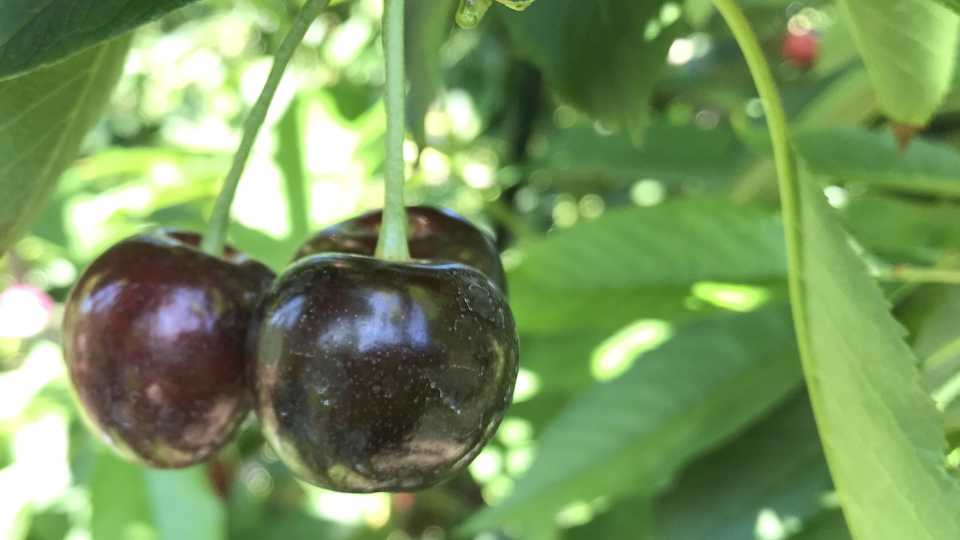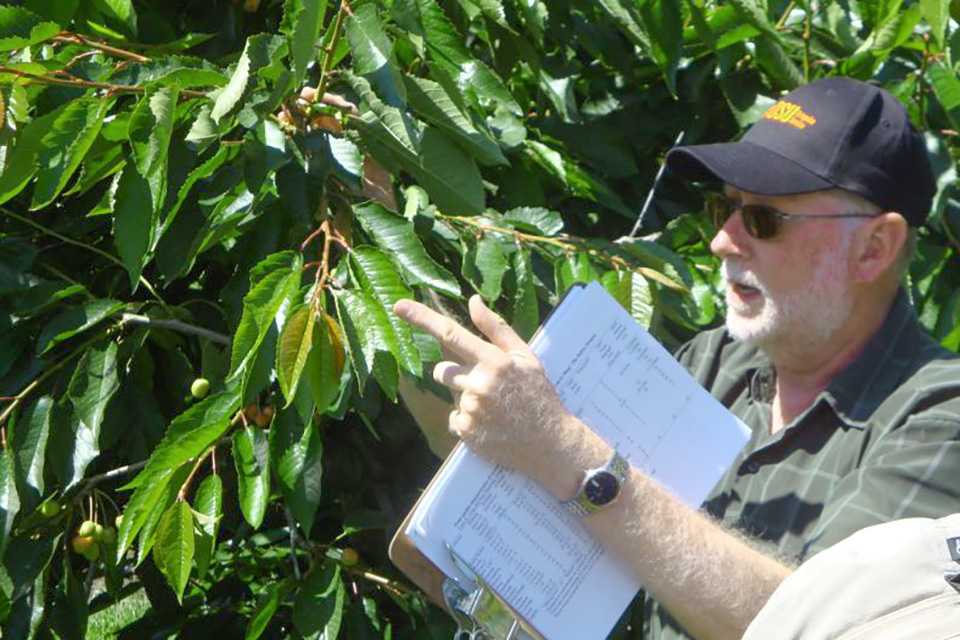New Variety Options on the Rise for Cherry Growers
Consumers look to the Pacific Northwest for quality cherries. With high demand, growers know they can get top dollar for cherries early in the season when the volume is lower.
Traditionally, the most popular variety has been ‘Chelan,’ which ripens in early- to mid-June and returns a higher profit than mid-season cherries. However, one drawback is its size. While consumers prefer large cherries, ‘Chelan’ tends to be small.
“It’s difficult to grow a good-sized ‘Chelan’ cherry,” says Lynn Long, Professor Emeritus at Oregon State University (OSU). “Growers still get a good price for it because it’s early, but an early cherry that’s also larger with more flavor would generate a lot of interest.”
Long has studied cherries as part of OSU’s Extension program since the late 1980s. While OSU doesn’t have a breeding program, after partially retiring in 2017, he spent a couple of years working part time for International Fruit Genetics (IFG), a large, private breeder of table grapes and cherries in Bakersfield, CA.
The company’s work intrigued him because it focuses on early-ripening and low-chill cherries. Most Northwest cherry buds require 1,000 to 1,200 hours of temperatures between 32ºF and 45ºF during winter dormancy for a good bloom. If cherries don’t get enough chill hours, their blooms could be weak, resulting in light yield and varying ripening time.
While cherries in the Pacific Northwest tend to get plenty of chill time, growers in California and other milder areas have faced insufficient chill hours in recent years. Long points to some of IFG’s varieties that may be a good fit for growers looking for early ripening cherries that are either larger or require fewer chill hours, or both.
‘CHEERY GRAND’
‘Cheery Grand’ ripens at about the same time as ‘Chelan’, Long explains, but is much larger. While it typically takes about 10.5 ‘Chelan’ cherries to fill a single row of a well-packed box of cherries (fruit is ~23 mm), it only takes 8 to 9 ‘Cheery Grand’ cherries (fruit is 30 to 32 mm). Also, the fruit requires less chill time, which makes it suitable for environments like California’s. Furthermore, its firmness (263 to 324 g/mm) allows it to hold up well when shipping for exports.
‘CHEERY TREAT’
While ‘Cheery Treat’ is not quite as big as ‘Cheery Grand’ (a 9-row, 30-mm cherry) it ripens at about the same time and is still larger than ‘Chelan.’ It also requires less chill time and is firmer than ‘Cheery Grand’ (280 to 340 g/mm). While cherries this firm are prone to cracking, ‘Cheery Treat’ offers good rain-crack resistance, another important factor for Pacific Northwest growers.
“Last year, there was constant rain in Spain while the fruit was ripening,” Long says. “While other cherries were destroyed, ‘Cheery Treat’ did very well in those conditions. Personally, I also like its taste. It’s not as tart to me as ‘Cheery Grand.’ While ‘Chelan’ tends to sometimes lack flavor completely, ‘Cheery Treat’ has a nice, sweet, full flavor.”
Long says that IFG has been testing its varieties for some years in California, Oregon, Washington, and internationally. “This gives them an opportunity to look at these varieties in different growing conditions around the world in the Northern and Southern hemispheres so we’re able to learn a lot,” he says.
Both ‘Grand’ and ‘Treat’ are commercially available as managed varieties for cherry growers to cultivate under contract with IFG. Long said that both are relatively easy to grow. Weekly applications of calcium from pit hardening to harvest could maximize ‘Grand’s firmness, but calcium applications are a common and good practice for most cherry growers anyway.
Both varieties will grow well in Northern California or the Pacific Northwest. However, for areas that require a super low-chill level such as Bakersfield, he recommends IFG’s ‘Cheery Crunch’ and ‘Cheery Blush,’ which only require about 150 hours of chill. This is among the lowest chill levels in the world. “This opens up other production areas,” he says.
While Long wouldn’t say the varieties are absolutely disease-resistant, he and his colleagues haven’t seen any problems with ‘Cheery Grand’ or ‘Cheery Treat,’ particularly when it comes to local concerns such as powdery mildew or bacterial canker.
IFG is working on additional unnamed varieties for commercial release that Long says ripen as much as a week before ‘Chelan.’ These varieties are also firmer than ‘Cheery Grand’ and ‘Cheery Treat’ (350 to 400 g/mm), are similar in size, and provide good flavor.
Heading toward full retirement, Long ceased working for IFG in December but still looks forward to what the company will continue to offer growers.
“Growers have been looking for a replacement for ‘Chelan’ for a long time,” he says. “There are a number of exciting options that IFG has for that early harvest window that are not being found in other breeding programs around the world.”

















